Before the United Kingdom was even a concept, England had existed, in one form or another, for thousands of years. This has given the country plenty of time to accumulate some incredible landmarks, which have, in the centuries since, grown in fame and now attract millions of visitors every year.
Your mind might instantly jump to London – as it should; there are dozens of iconic landmarks in the capital – but England has countless landmarks equally worth your time outside of the city. This collection would look remiss without big-hitters like Big Ben and Stonehenge, but you will hopefully also discover some other famous (but lesser-known) landmarks here that peak your interest.
From London to the Lake District: this is a list of 24 of the most famous landmarks in England, and what you should expect.
Disclaimer: Hi! this post may contain affiliate links which will take you to online retailers that sell products and services. If you click on one and buy something, I may earn a commission, see my Affiliate Disclosure for more details.
Famous Buildings
Big Ben
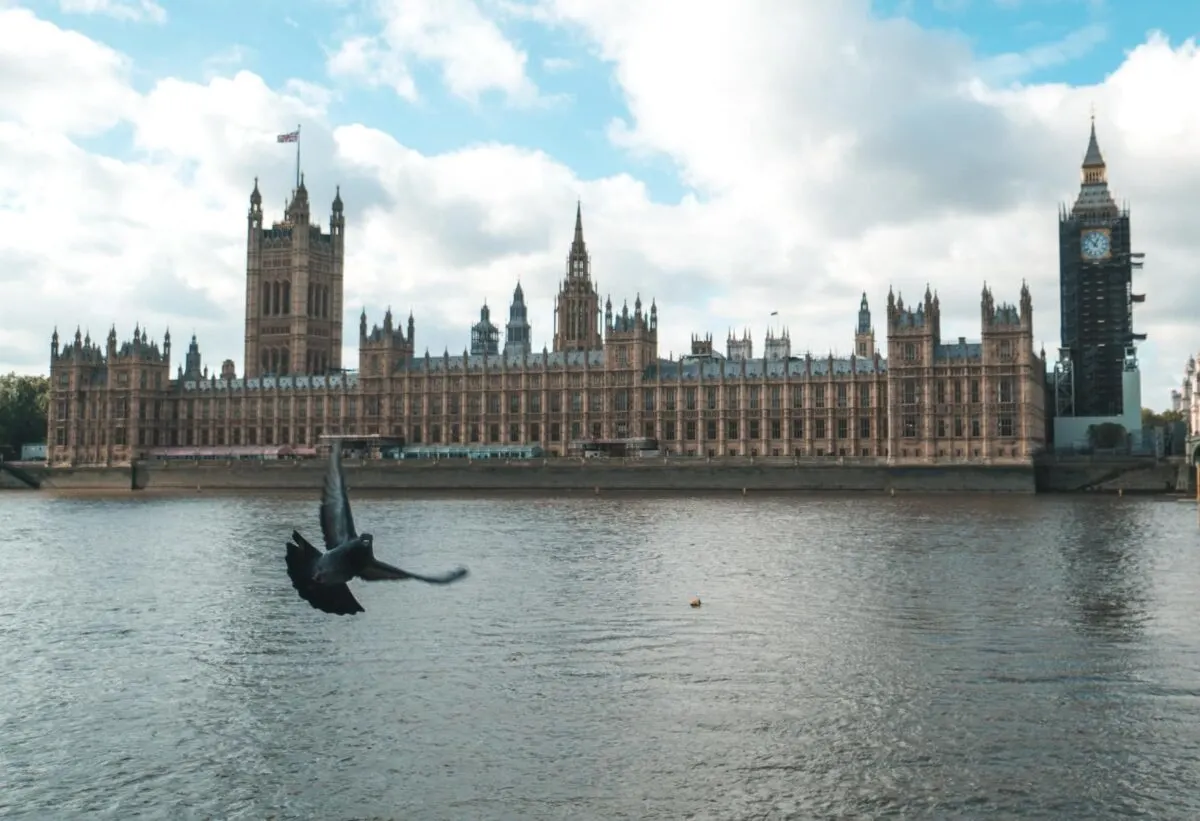
Starting with the capital, and what is arguably the most famous landmark in the UK: Big Ben. After a 5 year renovation period, Big Ben, or the Elizabeth Tower as it is formally known, finally shook off its scaffolding in 2022. The gleaming gold of the world’s most famous clock is visible once again to the masses that crowd Parliament Square jostling for the best photo position.
When the clock tower first chimed all the way back in 1859, it was the largest clock in the world. It has since lost that title, but gained a new one as perhaps the most famous landmark in all of England. Any film, tv show or photograph that wants to establish the setting as London or England more generally, doesn’t need to look further than Big Ben. It’s instantly recognisable, and seared into the collective consciousness of onlookers as the representative of London.
Buckingham Palace

As the official London residence and administrative headquarters of the Royal Family, Buckingham Palace is at the centre of all the pomp and ceremony that comes with royal tradition. From royal weddings to jubilees, the decadent displays of opulent lavishness at the palace are part of the pageantry that makes the royal family so popular with tourists.
You can walk through the halls of the Queen’s home on a guided tour during select times of the year; giving you a rare insight into a working royal residence. For the majority of visitors, the gates are as far into the palace as they will reach. From there you can still see the neoclassical façade of the 18th century building, and, more importantly, the stern emotionless faces of the Queen’s Guard hidden beneath their ridiculous but iconic bearskin hats.
Radcliffe Camera, Oxford University
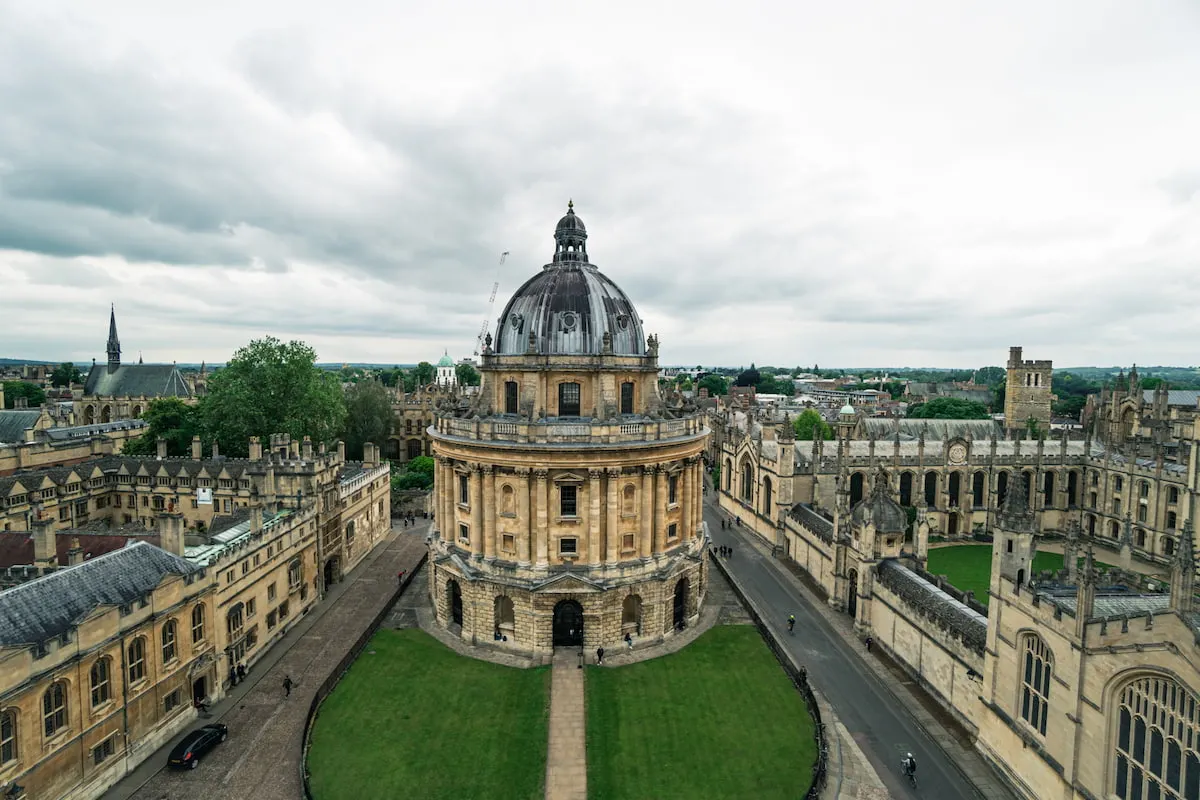
Oxford University is an iconic institution in itself, but the image most recognisable when the university – or Oxford – is mentioned, is the imposing dome of the Radcliffe Camera.
This famous building is Oxford’s favourite postcard picture and tends to be the one that features in magazines and depictions of the city. You can see the Palladian-style building, designed by James Gibbs in the 18th century, in person by simply walking a few minutes from the city centre onto the university grounds. For a truly exceptional view of the Radcliffe Camera, you should climb the steps of St Mary’s Tower in the Church of St Mary the Virgin.
To go inside, you must be on a guided tour. It is part of the historic Bodleian Library complex and public access is restricted.
Castles and Cathedrals
Tower of London
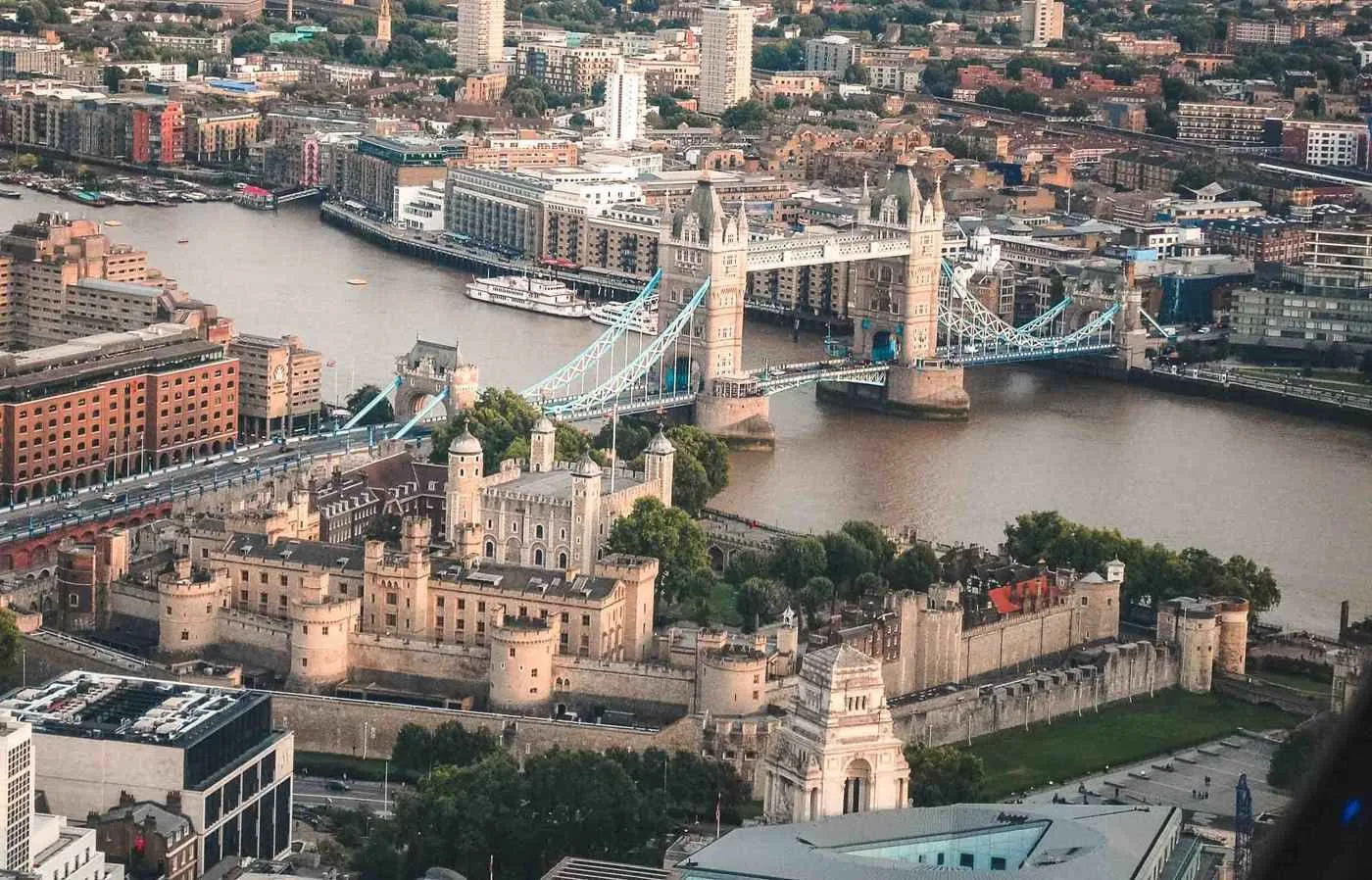
For almost a thousand years, the Tower of London has stood as a symbol of authoritarian power and judicial punishment. At first an ominous figure of fear and oppression, the castle is today a reminder of the storied history of England, and in particular, the monarchy.
Some of the most notorious events and executions in the history of the English throne have occurred in the tower; most of which occurred in the 15th and 16th centuries. This is where the two Princes in the Tower disappeared, thought to be murdered by their uncle Richard III in a coup for the throne. The unfortunate wives of Henry VIII, Anne Boleyn and Katherine Howard, and later the six-day queen, Lady Jane Grey, were also all beheaded on the grounds.
Its rather gruesome history is a fascinating one, and is best discovered on a tour with a Beefeater guide. After wandering past traitor’s gate, the expansive museum and the tower’s ravens (which can, of course, never leave the tower), you can see the Crown Jewels, which include the crown of Queen Elizabeth II and the Koh-i-Nûr diamond.
Canterbury Cathedral
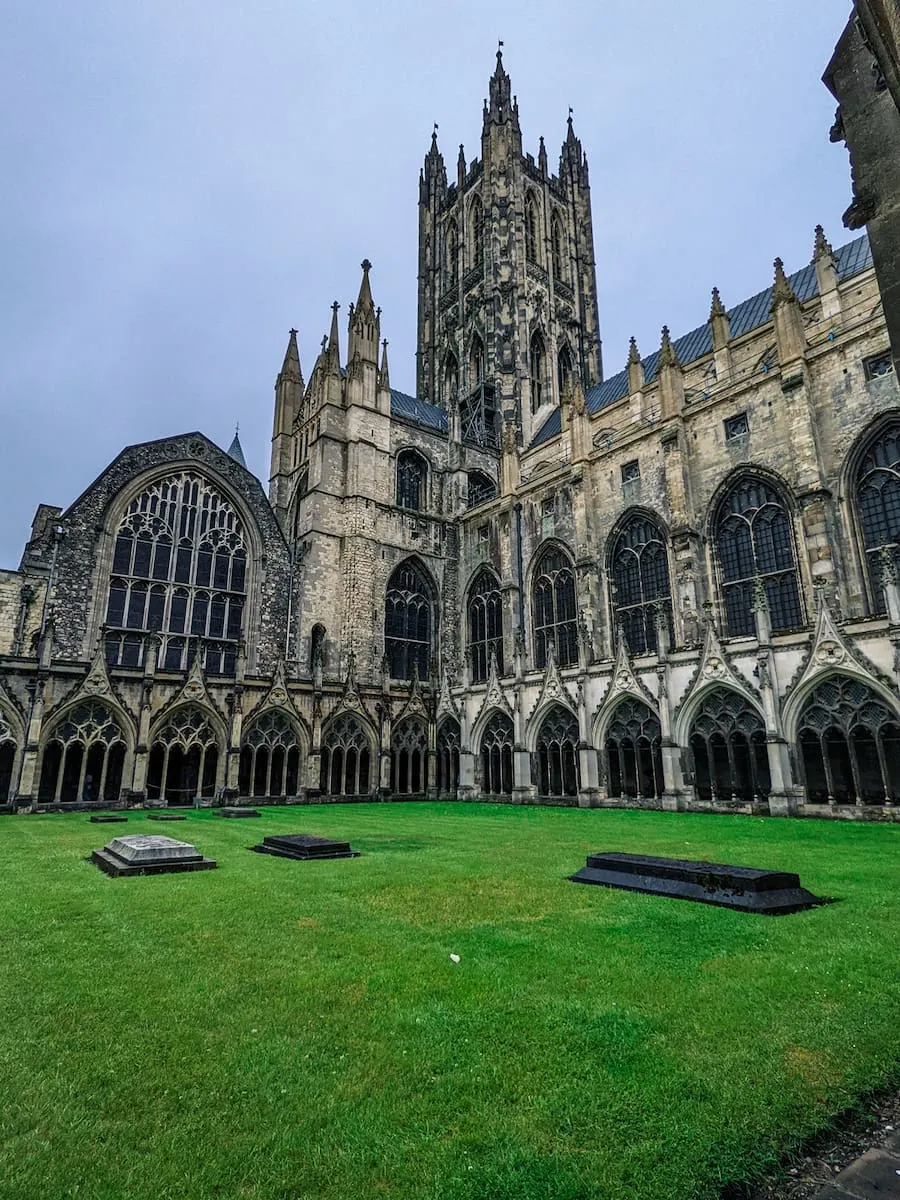
There’s no shortage of spectacular cathedrals in England, but Canterbury Cathedral is up there with the best. The origins of the cathedral begin in the 6th century, though the current structure dates back to the 11th.
It is one of the most ancient and impressive cathedrals in Europe. This magnificent Gothic structure is a marvel of craftsmanship and engineering; it is hard to comprehend how such a feat was accomplished almost a thousand years ago.
Most famously, the cathedral was the site of a murder of miscommunication, when the Archbishop of Canterbury, Thomas Becket, later sainted, was assassinated by a group of knights who believed they were enacting the King’s wishes. For centuries, the steps and interior of Canterbury Cathedral were a popular pilgrimage, as rumours of miracles and healing occurring swirled in the Middle Ages. This is the destination of the pilgrims in Chaucer’s Canterbury Tales.
Windsor Castle

Windsor Castle is another of the Queen’s countless royal residences – and supposedly, one of her favourites. You can see almost a millennium of architectural design on show at the castle, which is the longest occupied palace in Europe.
The castle was built in the 11th century after the Norman invasion, and has sublime examples of Georgian, Tudor and medieval design within its grounds. You can wander through the lavish State Apartments, where the Queen normally hosts visitors, and shouldn’t miss the beautiful Perpendicular Gothic St. George’s Chapel, where Harry and Meghan were married.
Your day out in Windsor isn’t complete without witnessing the changing of the guard – which, as it turns out, is not limited to the one in London!
Westminster Abbey
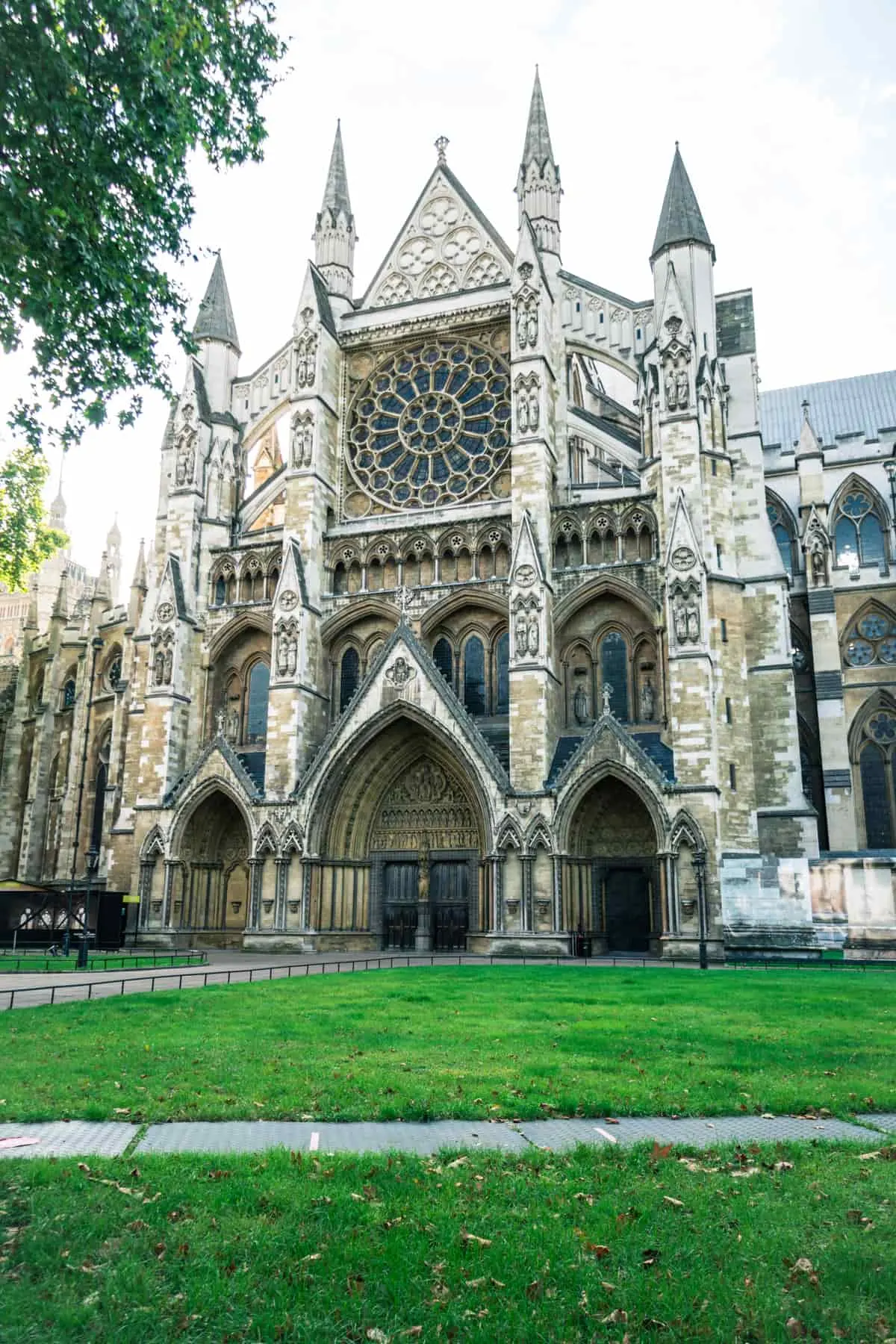
When it comes to famous castles and cathedrals in England, you will find there is a bit of a pattern: they are typically ancient, and usually have clear royal connections. True to form, Westminster Abbey was built in the 13th century, and has ‘Royal Peculiar’ status, meaning it belongs to the reigning monarch.
This epic Gothic, Notre Dame-esque church has been used for coronations, royal weddings and important national ceremonies for centuries.
Amongst the numerous tombs of monarchs and royals, there are other famous figures in English history buried in the abbey. Poets’ Corner is the resting place for many of England’s greatest writers, including Geoffrey Chaucer, Thomas Hardy and Charles Dickens. Memorials to the likes of William Shakespeare and Jane Austen can also be found here.
York Minster
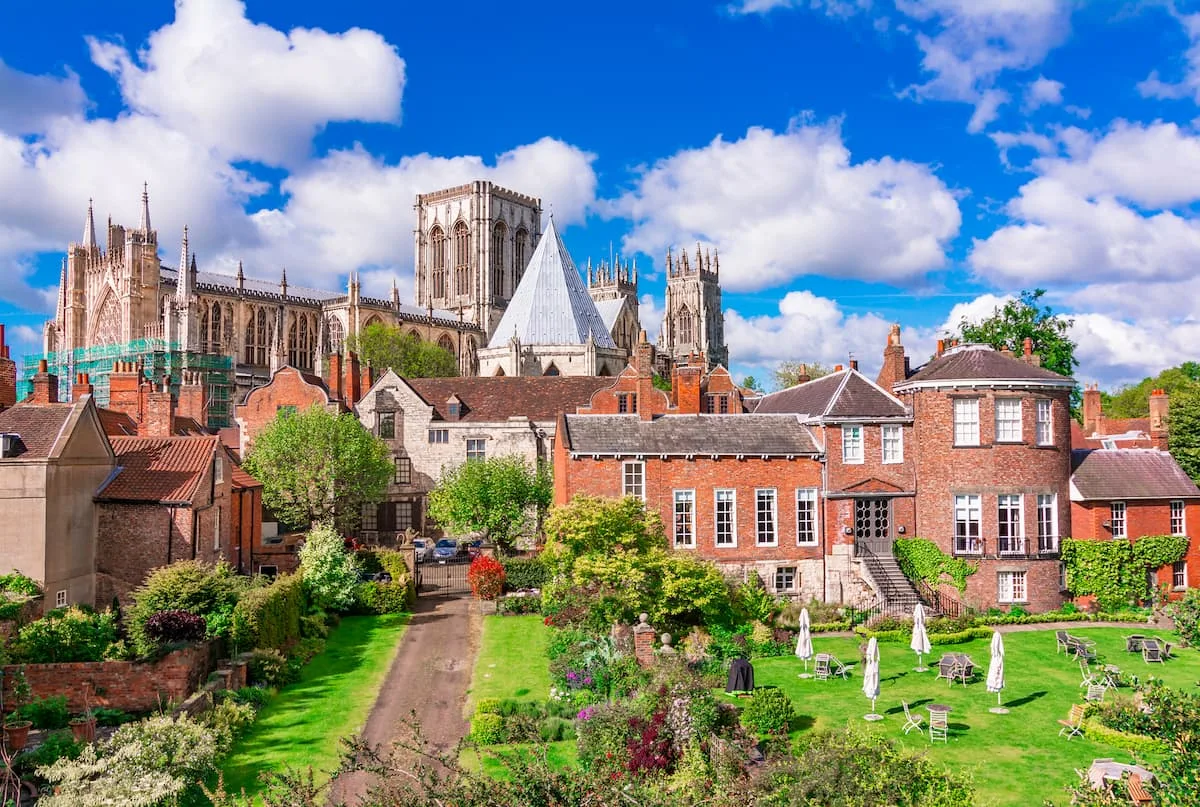
York is one of the most ancient cities in England, and was even briefly the capital. For centuries, York was an incredibly important city to those in power – perhaps most famously during the Wars of the Roses.
You can still see the history of the city etched into its walls – and the cathedral, which is the largest in northern Europe, belies the city’s previous importance. York Minster took centuries to build, starting in the 13th century and reaching completion in the 15th. All those years of careful craftsmanship and impressive medieval engineering created one of the most astonishing Gothic structures in the world.
The architecture of York Minster is breathtaking whether you are viewing the outside of the cathedral or have ventured inside. The famous Rose Window can be found within the South Transept; it was designed to highlight the union of the Houses of Lancaster and York and help legitimise the Tudor dynasty.
Another landmark in York worth noting is the Shambles, a ramshackle street of wonky medieval houses and cobblestones popular with visitors. You can easily see everything York has to offer in a single day.
St. Paul’s

Rounding out the cathedrals is St. Paul’s, an iconic part of London’s skyline. Walking up to the top treats you to fantastic views over the city.
It is hard to imagine the bank of the Thames without St. Paul’s, but it came close to destruction in the 1940s. The dome of this white cathedral miraculously stood through the bombing of the Blitz, becoming a symbol of hope during WWII.
Iconic Bridges
Tower Bridge
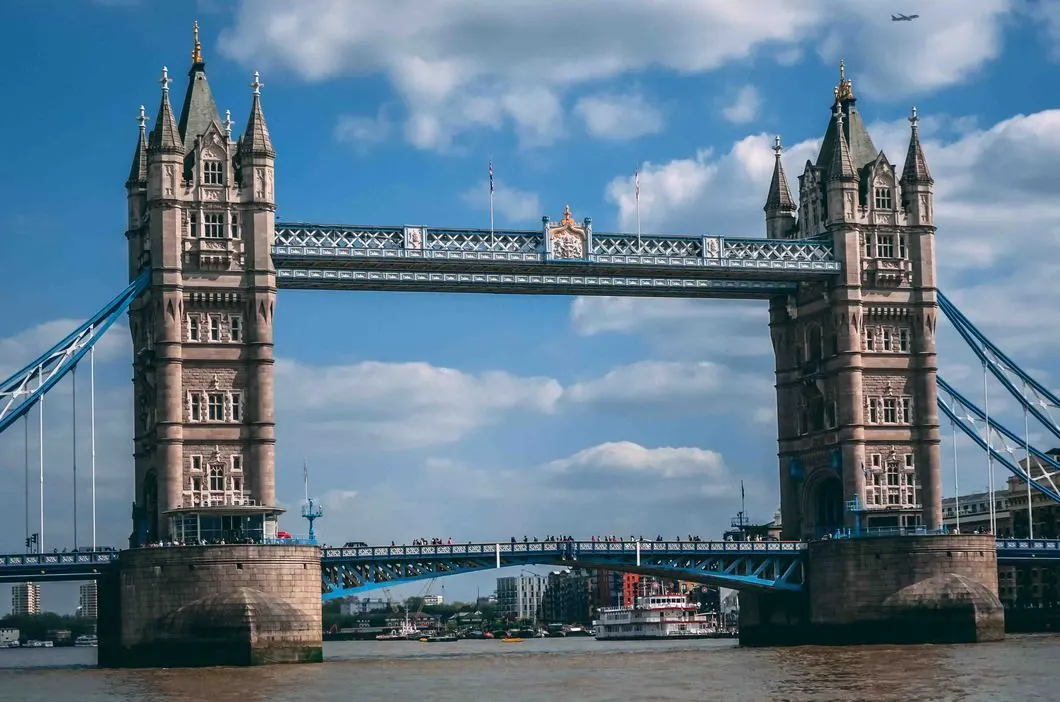
Tower Bridge is one of the most recognisable bridges in the world, but is often misnomered as London Bridge, which is barely a kilometre up stream. The Neo-Gothic Victorian Tower Bridge was designed by Horace Jones and engineered by John Wolfe Barry, and built in 1886, though it took almost a decade to complete.
Tower Bridge is situated next to its namesake, the Tower of London. Its elegant towers were designed to conform with the ancient look of the medieval castle; an attempt which delightfully created both an elaborate and picturesque end result.
You can climb up to a viewpoint within Tower Bridge for views over the Thames. If you’re lucky, you might see the raising of the bridge when you visit, which happens roughly 800 times a year and only takes a handful of minutes to complete.
Clifton Bridge

Sitting high above the trendy city of Bristol, the Clifton Suspension Bridge is a marvel of Victorian engineering. Designed by Isambard Kingdom Brunel, the spectacular bridge spans the distance between Avon Gorge and the River Avon.
For the best views of the bridge, you can walk up to the bridge and through Leigh Woods in an hour-long circular walk from Clifton.
Landmarks of Historical Significance
Shakespeare’s Birthplace, Stratford-upon-Avon
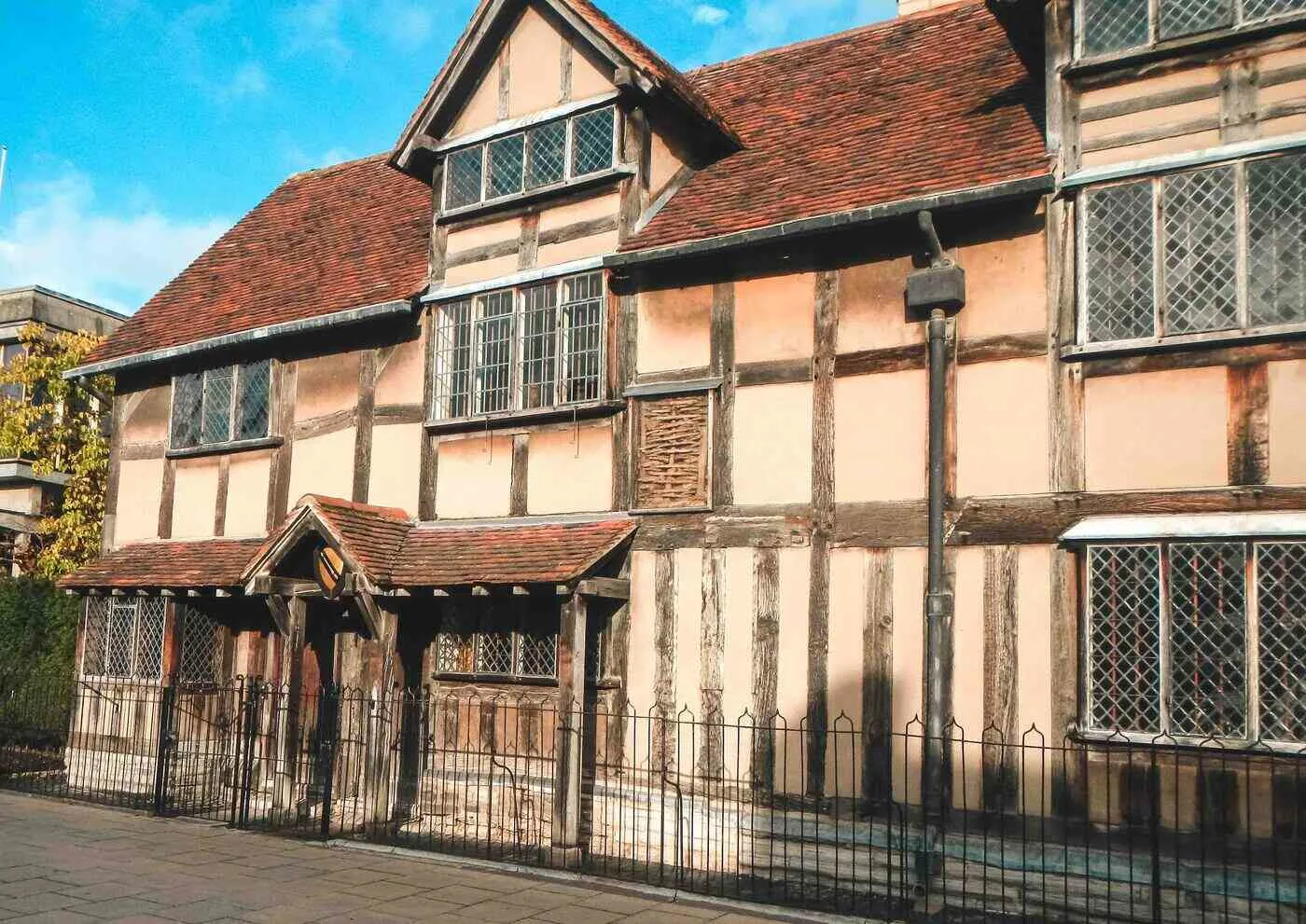
England’s most famous writer does of course attract a huge amount of interest; people flock to places connected to his life. His grave in the Holy Trinity Church is one of those places, his birthplace and childhood home, also in Stratford-upon-Avon, is another.
William Shakespeare is arguably the most famous playwright in the history of literature. You can learn more about the early days of his life, and the following years after his marriage to Anne Hathaway, during your visit.
Stonehenge

Are there any prehistoric monuments more iconic than Stonehenge? Just a silhouette is enough to instantly recognise this landmark; the shape and image of Stonehenge is so widely known that it would be almost impossible to mistake it for anything else.
It is a landmark that could arguably be claimed as ‘the most famous’ landmark in England. Stonehenge is in the same ballpark as Big Ben and Buckingham Palace when it comes to fame, and is almost certainly the most widely known landmark outside of London.
The ancient stone circle has stood for thousands of years. It is believed to be 5000 years old, starting in the Neolithic period with finishing touches added in the Bronze Age. What the purpose of Stonehenge was and how it was built is largely up for debate, though there are many theories, from pagan worship to wild alien conspiracies, regarding this unmissable structure on Salisbury Plain.
Hadrian’s Wall
Initially built to keep the untameable barbarians to the north out and away from the civilised society of the Roman Empire, Hadrian’s Wall became little more than a way to partition cattle after the empire’s fall.
Stretching 73 miles from coast to coast, this remnant of one of history’s greatest empires is a nod to Roman presence in Britain, and the advanced engineering techniques in use almost 2000 years ago. While not the most impressive landmark visually, the history behind it – and the surrounding scenery – make this a worthwhile visit.
Roman Baths
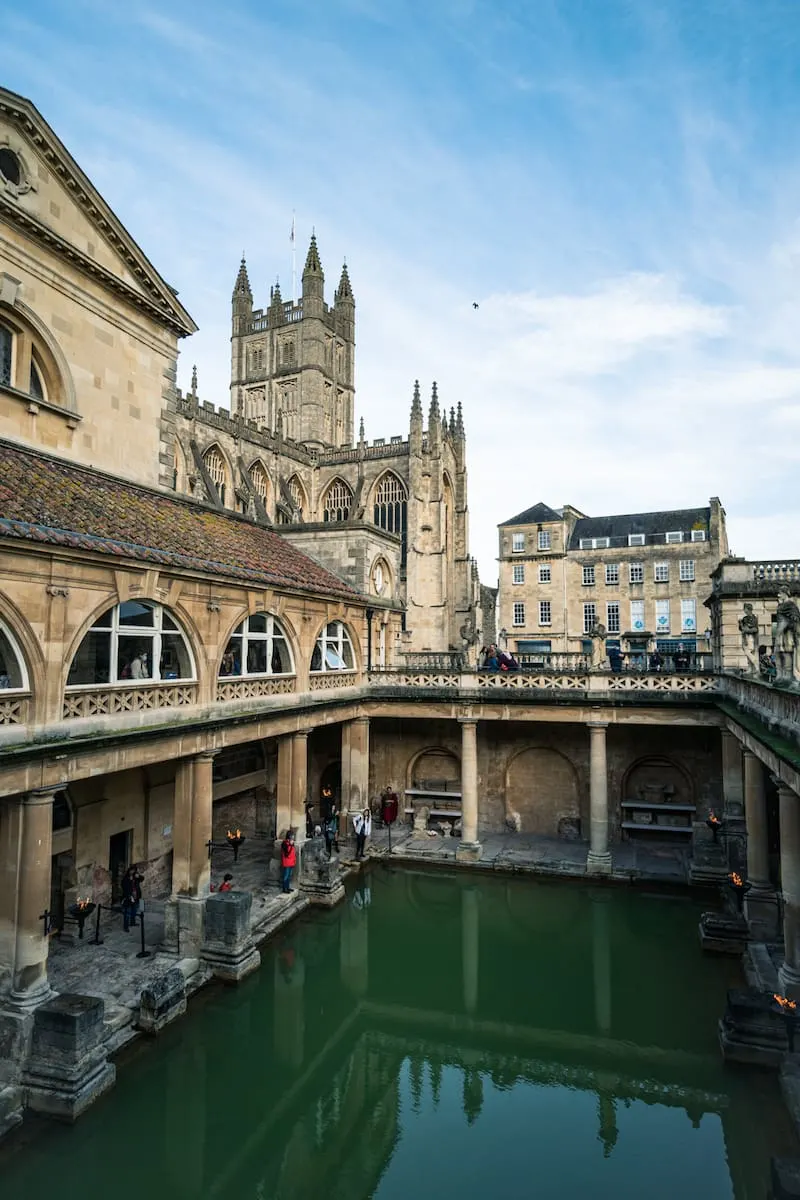
Speaking of the Romans… the city of Bath’s namesake, the Roman Baths, are a stunning historical landmark visited by over a million people every year.
Taking advantage of the natural thermal springs that run beneath the city, the Romans constructed the bathhouse in around 70AD to indulge in the mineral-rich waters. With luminous emerald water surrounded by pillars and classical architecture, the baths are an unmissable sight for anyone visiting the south west of England.
Iconic Natural Landmarks
Durdle Door

Situated on the gorgeous Jurassic Coast in Dorset, Durdle Door is a landmark 140 million years in the making.
Wander over the cliffs to Lulworth Cove and you will find one of England’s most outstanding views. The golden sands and gentle blue waves of Lulworth Cove frame the iconic stone arch; it is one of the most famous natural features in the UK, and is the standout attraction in a stellar lineup of beautiful places in Devon and Dorset.
White Cliffs of Dover or Seven Sisters
Long the marker of arriving home from the continent, the chalk-white cliffs of Dover have been the subject of warbling WWII ballads, countless poems and even Shakespeare plays.
Before air travel was readily available, these chalk cliffs were the last thing travellers would see when departing Britain, and the first sight they would see upon returning. This has made the distinctive white cliffs an iconic symbol of home, and a reminder of the efforts required defending the coastline in wartime.
Several miles down the coast in Sussex is a less culturally significant but altogether prettier landmark. The sparkling white cliffs of the Seven Sisters are one of the UK’s most beautiful natural landmarks.
Sherwood Forest
Robin Hood and his band of Merry Men once roamed these woods, stealing from the rich and giving to the poor.
It is their legend that has made Sherwood Forest a famous landmark in England – you can walk on several trails through the woods, try your hand at archery, and learn more about the local folk hero of Nottinghamshire during your visit.
Relatively Recent Famous Landmarks
Eden Project

A far more modern addition to the south west’s iconic sights is the Eden Project. This unmissable eco project is comprised of the two famous geodesic domed biomes and outdoor botanical gardens.
You can experience the climates, habitats and wildlife of the Mediterranean and the rainforest within these biomes. The exotic varieties of flora and fauna feel a world away from Cornwall, but the experience of the Eden Project has proved to be one of the region’s most popular attractions since its opening in 2001.
Brighton Palace Pier
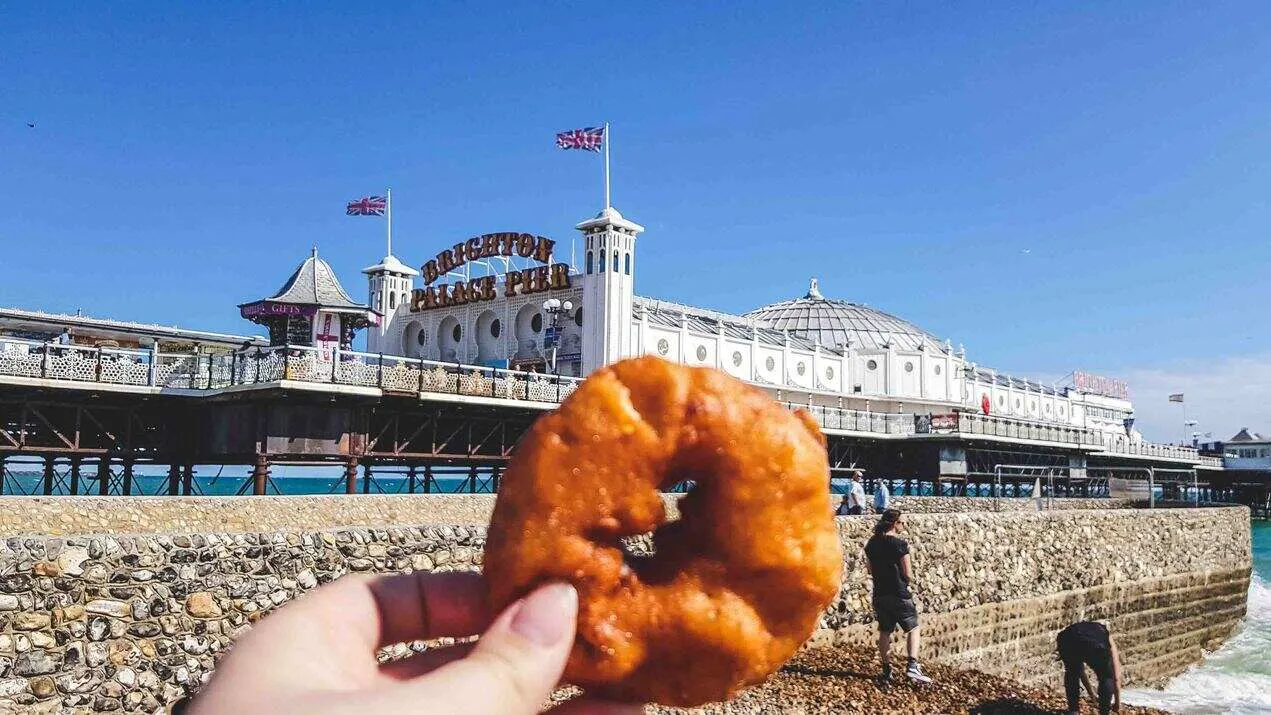
Brighton is known for being fun, flighty and fancy-free. The coastal town has become the most popular beach resort in the UK, and Brighton Palace Pier is the star attraction.
Opening in 1899, the Victorian pier was the third to be constructed in Brighton – and is the only one not in ruins. It’s an impressive and iconic sight in the city, stretching out for over 500m into the sea, and is lovingly maintained to keep its gleaming appearance intact.
It’s one of the larger piers in the UK, and goes beyond the small amusements and fish and chips you might expect from a typical seaside resort’s pier. There’s a small theme park at the end of the pier, with enough space to fit a rollercoaster and a log flume. You can also eat anything from churros to frozen yoghurt or pizza while admiring the lovely views over Brighton and the English Channel.
Angel of the North
This Anthony Gormley sculpture towers above the A1, and has done so ever since it was completed in 1998; it is one of the most impactful contemporary sculptures in the UK.
With a wingspan larger than a Boeing 757 and a height of 20 metres tall, this imposing steel sculpture is a spectacular icon of Gateshead, and has quickly become a symbol of home for the residents of Newcastle.
The National Parks
The Cotswolds

Quaint and quintessentially English, the Cotswolds are the unofficial representative of rural England.
Charming villages and gentle rolling countryside, with winding rivers and honey-coloured cottages are the norm here. A visit to the Cotswolds is a relaxing escape into the countryside. You will likely spend your time slowly meandering from place to place, embarking on walks with sweeping views and partaking in afternoon teas in adorable village cafes.
Even if you can’t set aside time for more than a day, you can still experience a trip to the Cotswolds. If you live somewhere relatively close, like London, there are several day trip itineraries that you can enjoy.
Lake District
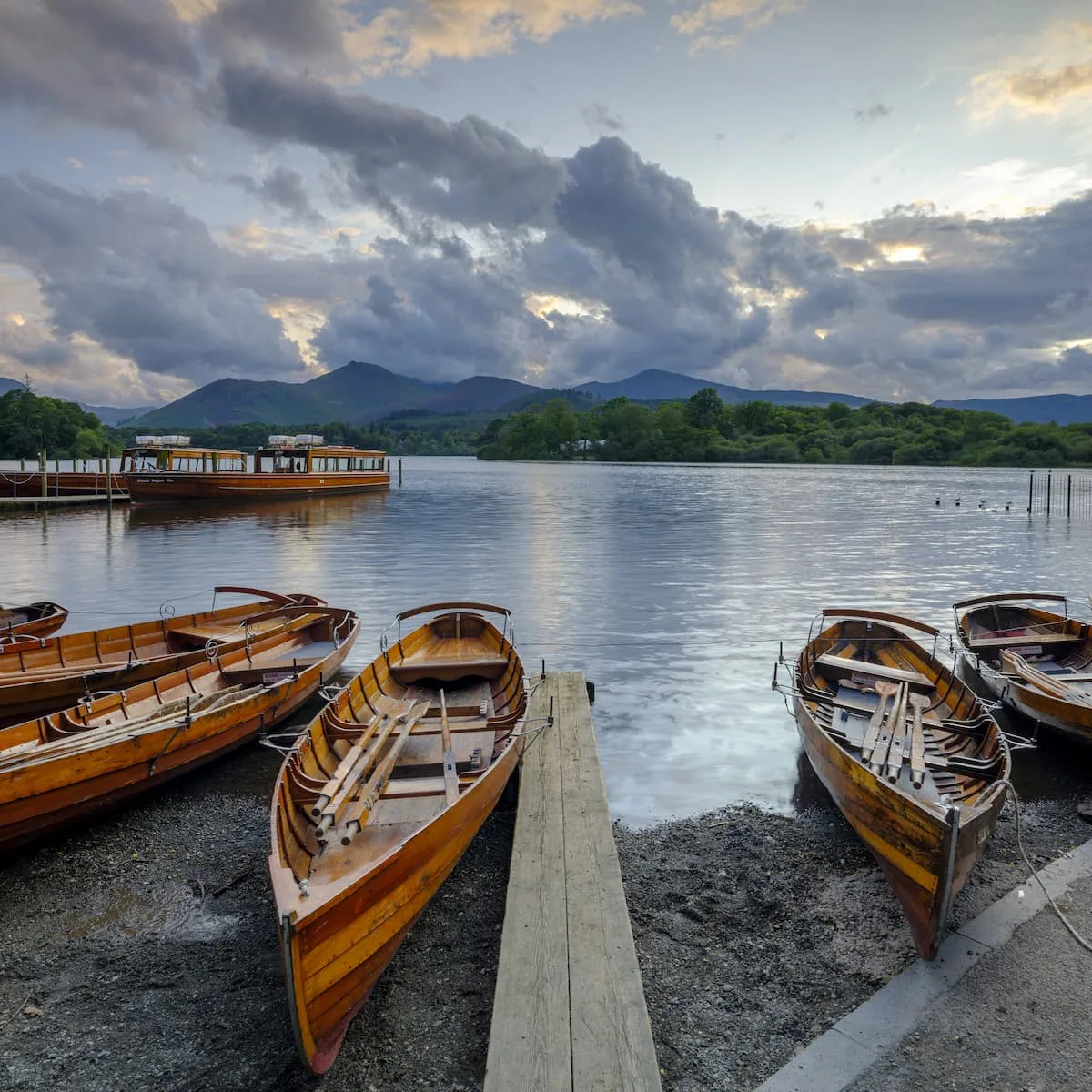
Exchange the rolling hills of the Cotswolds for the dramatic ridges and mountains of the Lake District, the most visited national park in England.
In regards to iconic landmarks; to narrow it down further, Lake Windermere is easily the most famous landmark in the Lake District. The 18km long lake attracts flocks of tourists – the cute towns and villages on the banks of the lake do as much to help its popularity as the scenery of the lake itself.
The wonderful landscape and quiet serenity of the Lake District has inspired countless poets, painters and Romantics. It’s a landmark that has stood the test of time, and is unlikely to lose its appeal with visitors any time soon.
Peak District
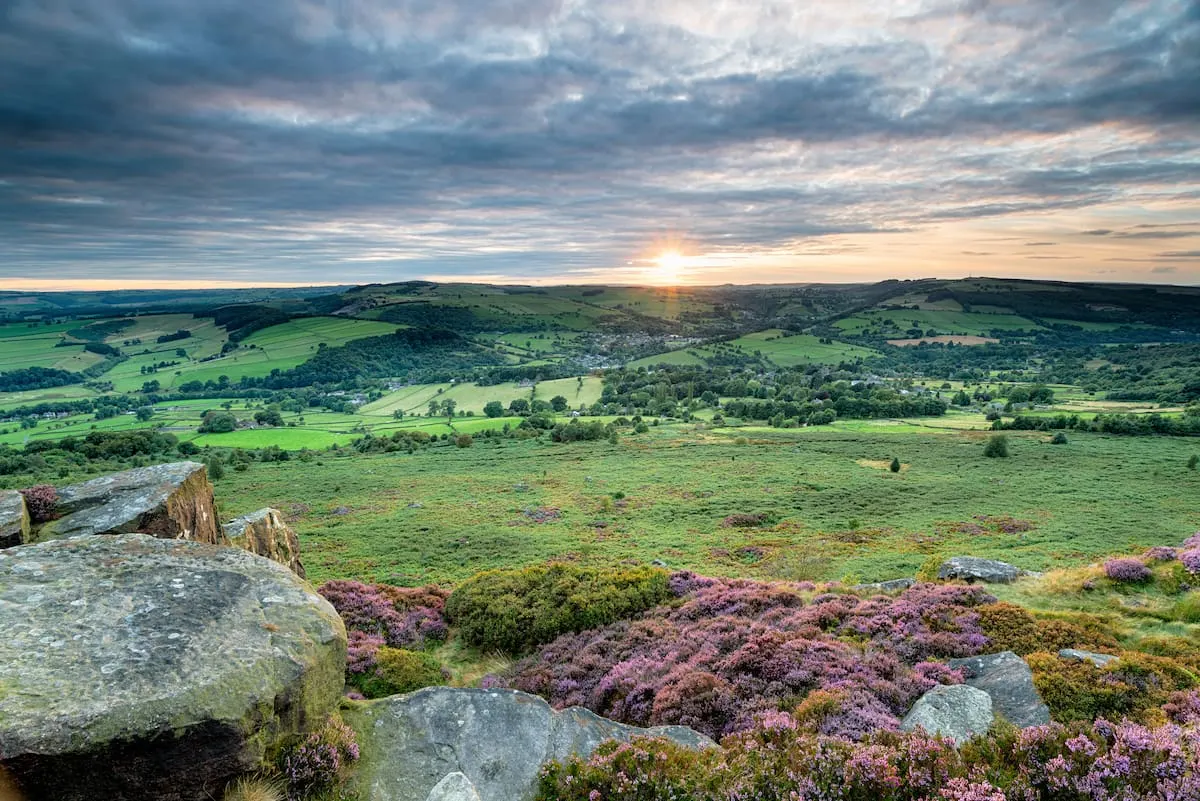
Similar to the Cotswolds in its quaint gentility and charming villages, but with the rugged peaks that give it its name: the Peak District gives visitors the best of both worlds. It is both a relaxing and active outdoor location, with lots of lovely towns and villages to visit.
Within the Peak District itself, the most famous landmark is a toss-up between the viewpoint at Mam Tor and the remarkable palatial Chatsworth House. While in the Peak District, don’t forget to try the truly unmissable landmark: a Bakewell Pudding from the original shop!
Famous Landmarks in England
There are so many iconic landmarks to visit in England – and as you can see, many reside outside of London. Once you have had your fill of the sights in the capital, you can venture out to explore the more remote corners of England.
While this is a pretty expansive list, there are even more popular landmarks to see in the country; it is larger than you might think! You can enjoy everything from ancient Roman ruins to contemporary art sculptures while touring the most famous landmarks England has to offer.

Kat
Hi, I'm Kat, an Australian that moved to London in 2013 to start a new adventure. What a roller-coaster that was! I love helping others move to the UK and people explore the world! I’d be honoured if you’d say, “Thanks!” with a £3 coffee on Ko-fi.

